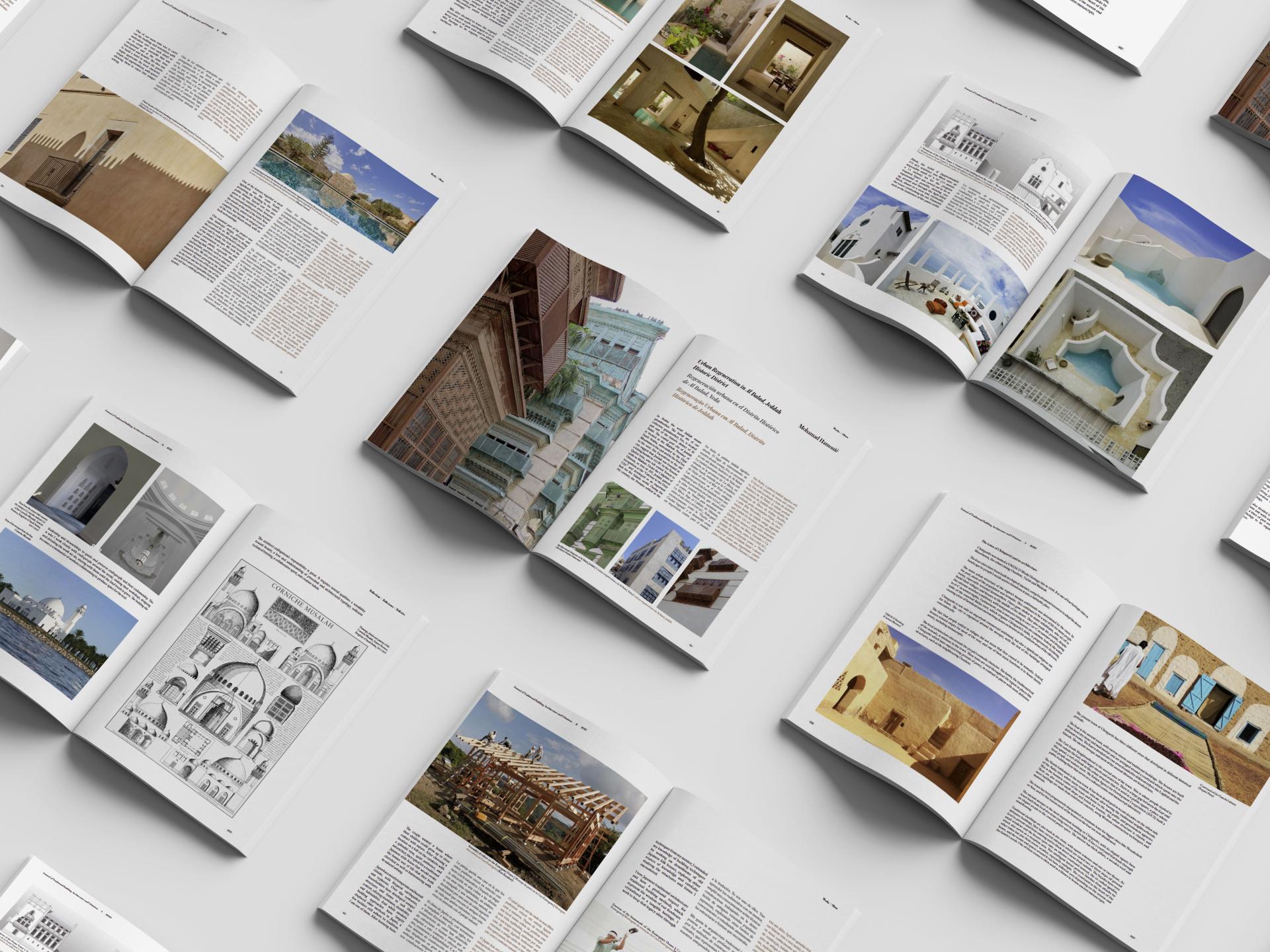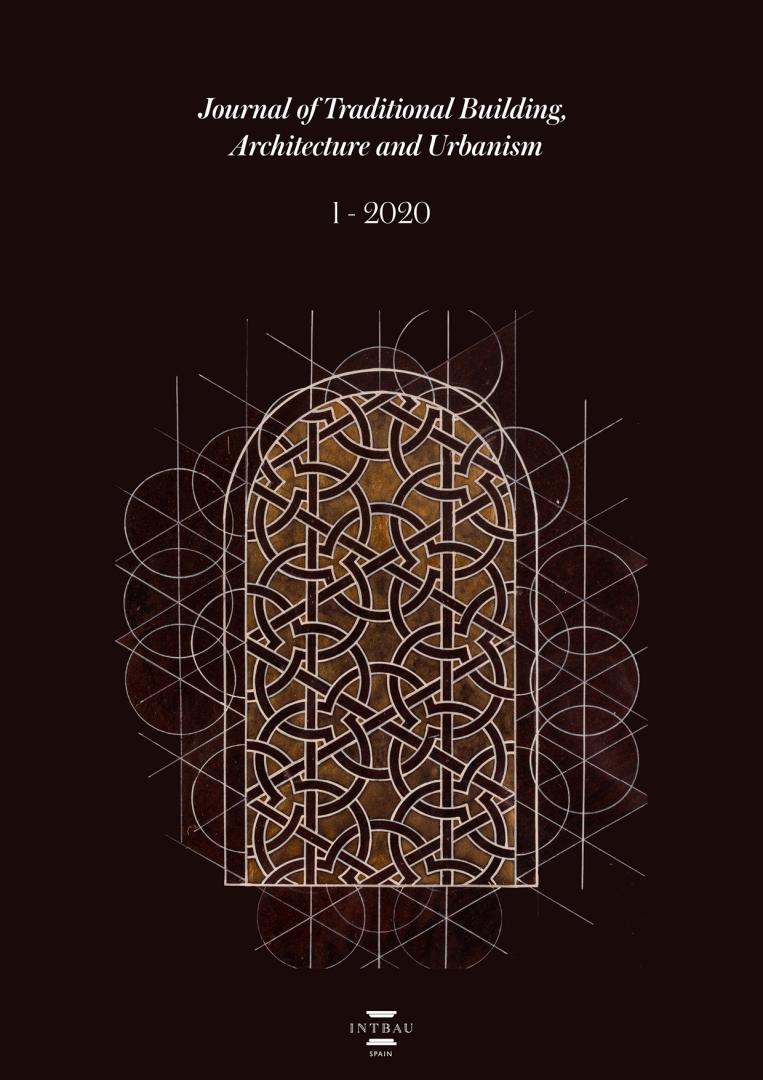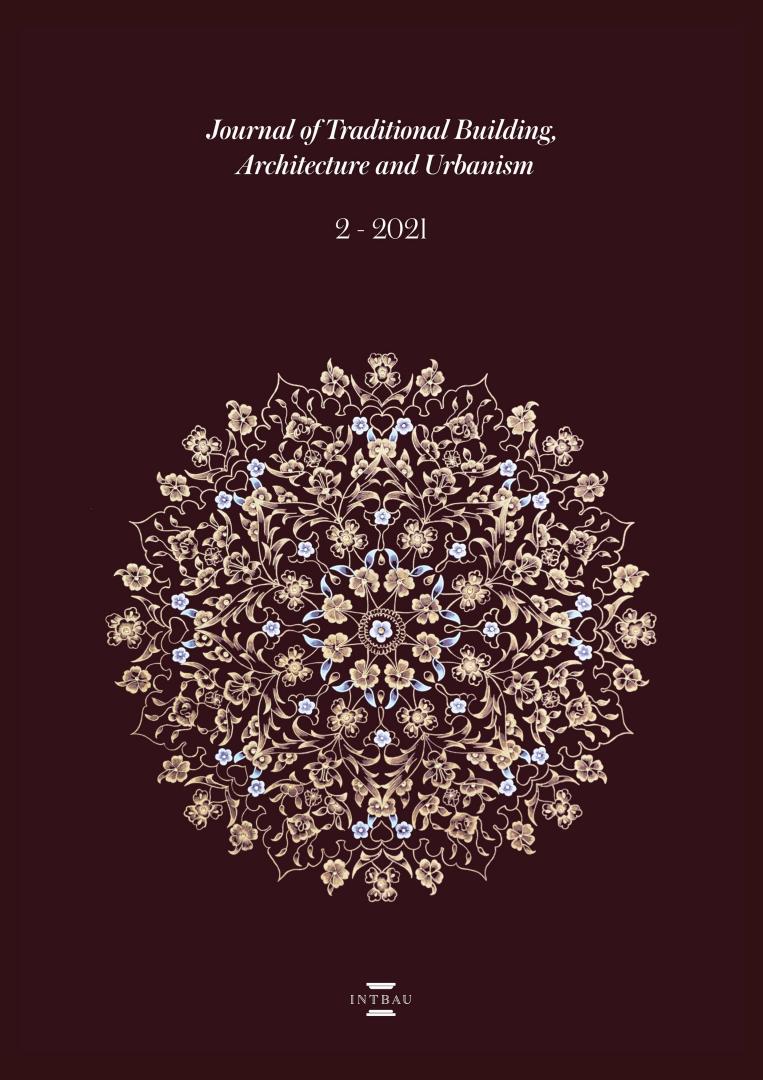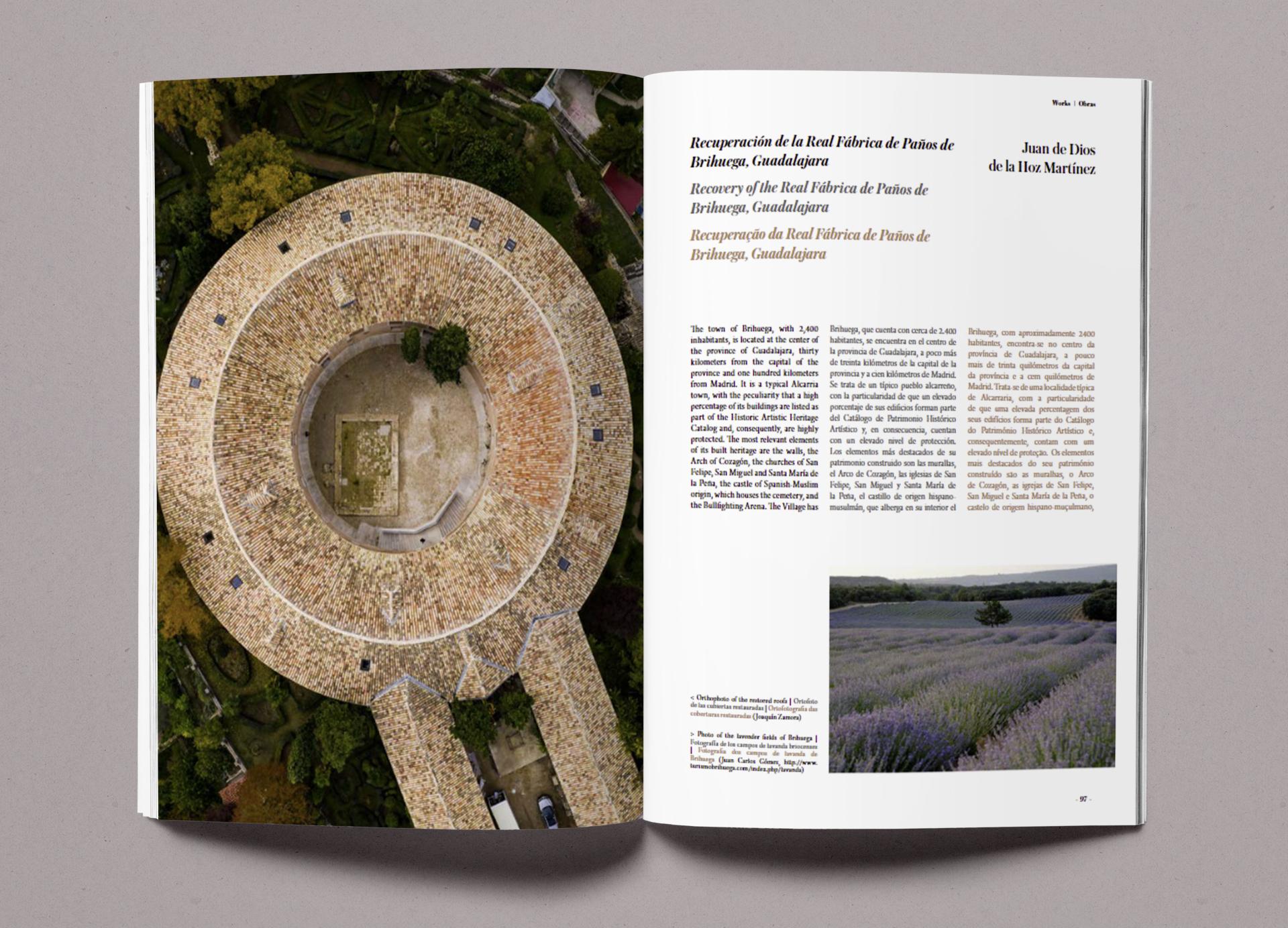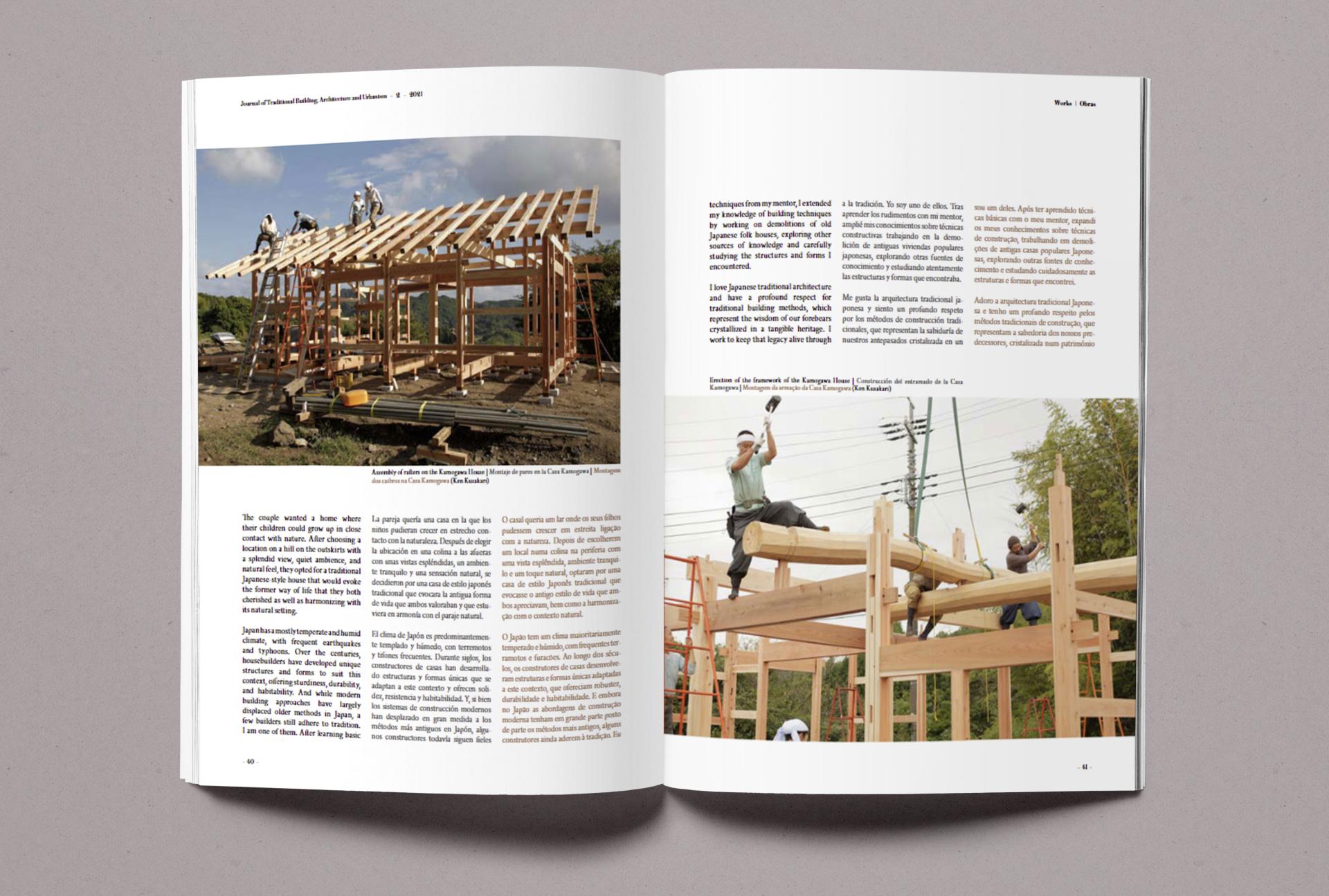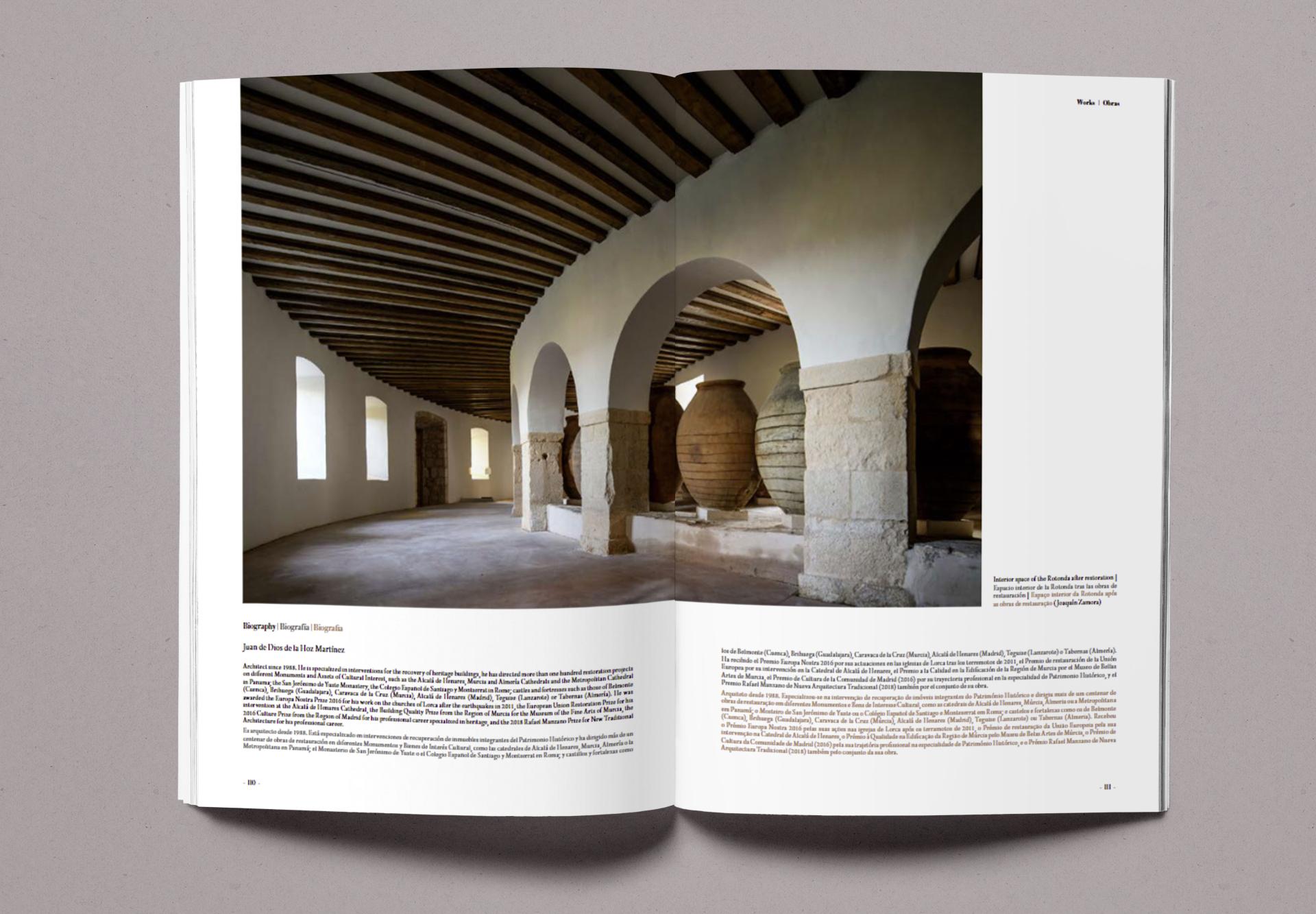Journal of Traditional Building
Basic information
Project Title
Full project title
Category
Project Description
The Journal of Traditional Building, Architecture and Urbanism is aimed at all those people and institutions interested in traditional and vernacular building, architecture and urbanism. Its objective is to promote the creation of places and buildings that are in harmony with the local culture and tradition and that are respectful of the environment and its natural resources. It also aims to provide a better knowledge of the different constructive cultures of the various regions of the world.
Geographical Scope
Project Region
Urban or rural issues
Physical or other transformations
EU Programme or fund
Which funds
Description of the project
Summary
The Journal of Traditional Building, Architecture and Urbanism is aimed at all those people and institutions interested in traditional building, architecture and urbanism. Its articles are related to the theory and practice of these disciplines. Its objective is to promote the creation of places and buildings that are in harmony with the local culture and tradition and that are respectful of the environment and its natural resources. It also aims to provide a better knowledge of the traditional constructive cultures of the various regions of the world and, with it, a greater respect towards them that may contribute to their better preservation and to their continuity.
It is published annually online and all its contents are freely available. It is a trilingual publication, where texts can be sent in English or Spanish and in which a large part of its contents is translated into both these two languages and into Portuguese. It includes both original academic articles, peer-reviewed and evaluated following the usual protocols of scientific journals, as well as other articles, news and reviews. With the goal of bridging the gap that continues to exist between the academic and professional worlds today, it also gives voice to the masters of traditional construction and there is particular focus on their crafts.
Key objectives for sustainability
Building traditions, which pursue a greater respect for the environment and its natural resources, respond to some of the main challenges we face in our time, such as the progressive disappearance of quality job opportunities, the growing generation of waste and toxic environments, the dissolution of the kind of public spaces which are designed to favour interchange and coexistence, the unbalance the rural areas are suffering, or the persistence of planning practices which lead to a serious dependence on private transport.
To keep this knowledge alive, to use it as a reference for the practice of the 21st century building, architecture and urbanism, to adapt it to the needs of our time, and to learn the many lessons it keeps offering for the way we design and transform our environment is inescapable in order to recover the now lost balance.
This journal presents examples of works, techniques and trades, and the practice of architecture and urbanism which is allowing us to move steadily forward in that direction.
Key objectives for aesthetics and quality
The Journal of Traditional Building, Architecture and Urbanism, as all those initiatives organized by INTBAU, has the aim of promoting the creation of places and buildings which are more human, which get to be in harmony with the local culture and its traditions and which are also respectful with regard to the environment, bearing in mind the local climate and the available resources. By promoting architecture, town planning and the arts of traditional building, it encourages people to study, to maintain and to restore both buildings and traditional urban complexes. The Journal also encourages them to create new spaces and places which, taking these ones as a reference, contribute to a better quality of life in the cities and villages throughout the world.
The main idea is thus that theory and practice should go hand in hand and that architecture and building be seen as a collective task in which equal importance is attached to clients and developers, technicians and designers, or to the artisan builders who give form to projects.
Key objectives for inclusion
The Journal of Traditional Building, Architecture and Urbanism has a digital version and a paper edition. The former is openly and freely accessible from anywhere on earth. The latter is distributed for free to the world’s main specialist libraries and in particular to the foremost architecture schools, so that the journal may be read by the greatest possible number of students, researchers, lecturers and all those interested in the covered topics.
As well as academic papers, and with the aim of reducing the distance still existing between the academic and professional worlds, a voice is also given to traditional master builders and particular attention is paid to their trades. The idea is thus that theory and practice should go hand in hand and that architecture and building be seen as a collective task in which equal importance is attached to clients and developers, technicians and designers, or to the artisan builders who give form to projects.
Moreover, as it is an open scientific journal, with Creative Commons License BY-NC-ND 4.0 (Attribution-NonCommercial-NoDerivatives) which facilitates access, free of charge, from all over the world.
Results in relation to category
One of the journal’s main aims is to consider the local cultures and traditions of the five continents so that each issue reflects the cultural wealth still to be found in our world and the rich interaction that has occurred historically and still occurs between those cultures and traditions. The object of all this is to enrich the way that we apprehend, design, transform and preserve the environment we live in. Unlike many other publications, this journal not only presents historical examples of traditional architecture and urbanism but also documents contemporary examples that continue to be built around the world on the same principles, so that these may be taken as a benchmark for building more hospitable, beautiful and sustainable buildings.
With the aim of reducing the distance subsisting today between the academic and professional realms, the journal has given a voice to traditional master builders, presenting their work and publishing essays authored by them in each issue. The meticulous presentation and many figures illustrating each article make the content more accessible and intelligible to a broad, non-specialist public.
To date, 138 authors have published articles in the journal, these coming from 25 different countries. In addition, the journal has an editorial board and scientific committee consisting of a total of 90 academic experts and professionals, including master craftspeople, from 18 countries and 50 diverse universities and cultural institutions.
The journal’s print edition has been distributed, for free, to over 120 libraries and cultural institutions in 20 countries and the articles in the online edition have to date been viewed a total of 35,000 times.
How Citizens benefit
The journal reached many countries around the world from its outset. In many of them, as in Spain, there had previously been no such publication focussed on traditional architecture and urbanism seen not just as a legacy of the past but also as a living heritage that may continue to be used to shape a more aesthetic and sustainable future.
All of the journal’s contents are openly and freely accessible. The listing of the digital edition in various indexes and databases and the abundant metadata for all articles posted on the website ensure that these are widely disseminated and that their content is easily accessible and usable by students and researchers. The journal’s print edition is also distributed at no cost to many libraries in the main international universities and cultural institutions, facilitating access by students and researchers.
In addition, the breadth of the editorial board and scientific committee, with a total of 90 academic experts and professionals, including master craftspeople, from 18 countries and 50 diverse universities and cultural institutions, facilitates a global dissemination of the various calls for papers and the submission of numerous proposals from a great range of places and cultures.
It is important to emphasize once again that in this journal anyone from anywhere in the world can submit content proposals at no cost, and that the results can be found openly online and are distributed free of charge in the printed version.
Physical or other transformations
Innovative character
In contrast to most architectural publications, which focus on the most fashionable architecture, that which does not take into account the local culture of each place, one of the journal’s main aims is to consider the local cultures and traditions of the five continents so that each issue reflects the cultural wealth still to be found in our world and the rich interaction that has occurred historically and still occurs between those cultures and traditions. The object of all this is to enrich the way that we apprehend, design, transform and preserve the environment we live in.
If there is one thing that distinguishes the Journal of Traditional Building, Architecture and Urbanism from many other scientific journals, it is the great care that goes into its presentation and publication and the profuse illustration of its articles. Ultimately this highly visual character, extending to every section of the journal, is intended not just to complement and add valuable information to the texts but also to make them more accessible and intelligible to a wide public.
In addition, the journal has a digital version and a paper edition. The former is openly and freely accessible from anywhere on earth. The latter is distributed to the world’s main specialist libraries and in particular to the foremost architecture schools, so that the journal may be read by the greatest possible number of students, researchers, lecturers and all those interested in traditional architecture and urbanism.
Learning transferred to other parties
It is often thought that we cannot today make buildings, towns or places as beautiful, lasting and sustainable as those created by past generations. This journal seeks to highlight those who continue designing and building with the masterly craft that gave rise to the heritage that we most appreciate, and to help a growing number of professionals to be able to continue this legacy in the future.
The ultimate aim of this publication is that the examples shown in it, which represent building cultures from all over the world, including Europe, can be taken as a reference by all those who are in charge of transforming our built environment. The fact that all the contents can be consulted free of charge on the Internet, together with the wide distribution of the printed version of the journal to libraries all over the world, suggests that this publication can be a good starting point to achieve these goals.
Moreover, as it is an open scientific journal, with Creative Commons License BY-NC-ND 4.0, all questions related to its methodology, the selection processes, the members of the editorial and scientific team, can be found in open access on the journal's own website.

